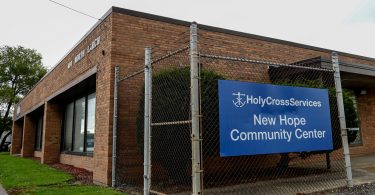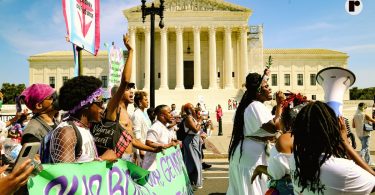The Arlington Street Church, long a spiritual beacon for the LGBTQ+ community in Boston and beyond, is one of eight recipients of grant funding from the National Park Service for restoration projects to help preserve America’s equal rights history.
The historic Back Bay church received $749,467 out of a total of $5 million awarded to sites in six states that tell the stories of women, Hispanic and African Americans, laborers, and the LGBTQ community, the park service said.
Arlington Street, known for its soaring steeple and sandstone facade, in recent years launched a $20 million restoration fund-raising campaign. It will use the grant money to rebuild the stairs to its south entrance. Others grant recipients include the United Colored American Cemetery in Cincinnati and the Peoria Women’s Club rehabilitation in Illinois.
“One of the things that we know at the National Park Service, is how much this preservation work matters,” said spokesperson Jordan Fifer. “And a lot of people don’t realize that the National Park Service is more than just parks.”
Arlington Street, part of the Unitarian Universalist Society, has been a steadfast presence in the fight for LGBTQ+ rights for decades. It hosted the nation’s first prom for LGBTQ youth, in 1981, and in 2004, the country’s first same-sex wedding in a church.
The church’s senior minister, the Rev. Kim K. Crawford Harvie, is one of the first lesbian ministers in Boston.
“We are a very diverse and welcoming community,” said John O’Connor, who began attending the church in 1989,the same year Crawford Harvie was hired. “It has challenged me to become the best possible version of myself that I can be.”
With building completed in 1861, the Georgian-style church is showing its age after more than a century of cold New England winters. Repairs have been made in recent years to its original wooden window frames and to its roof, and a 20-foot chimney has been rebuilt, according to Jon Andersen-Miller, the church’s restoration chair.
“It’s sort of like buying a Rolls-Royce and leaving it out in the rain, with the top down, for 150 years,” said Andersen-Miller, 61, who has been at the helm of the church’s restoration efforts since 2018. “We’ve been holding our breath.”
O’Connor said the church’s south entrance stairs were removed 10 years ago. The church had hoped to install a ramp to improve access, but it was never built , he said.
“To build it back, and build it to code, and to have the blessing of the Landmarks Commission has a $750,000 price tag,” said Andersen-Miller.
Although the church is listed on the National Register of Historic Places, its listing does not reference the site’s LGBTQ significance. As a condition of the grant, said Megan Brown, the chief of the park service’s state, tribal, and local grants division, the church’s documentation will be updated to “tell its broader significance.”
“We try to do that with all of these grants for underserved communities to make sure that the documentation of that site tells the full story,” said Brown. “That’s one of our requirements as part of the grant project.”
As part of the grant evaluation, Brown visited the church in May 2023. She took note of the building’s beautiful windows and historic architectural features, but most striking, Brown said, were the stories of the church’s role in the community.
“The other facet of this [grant] is helping to provide work to the physical building that then helps the community presence of the organization stay and still be supportive in a beautiful place,” Brown said. “That’s pretty special.”
Construction will begin in April and finish by the fall. After a cement foundation is poured, it will be enclosed in brownstone to match the original design. The final touch, said Andersen-Miller, will be a bronze handrail.
The sudden collapse of a historic Connecticut church’s steeple and roof in January was a stark reminder of the need to preserve historic churches, Andersen-Miller noted.
“Our historic churches are crumbling, with very few resources to avoid dangerous conditions,” Andersen-Miller said.
The restoration has become very personal for a number of people involved, such as Andersen-Miller, who married his husband at the church alongside almost 50 other couples on the first day same-sex couples could marry in Massachusetts.
“We certainly hope to interest more members of the community to participate in our restoration,” said Andersen-Miller. “We have a long way to go.”
Lila Hempel-Edgers can be reached at [email protected]. Follow her on X @hempeledgers and on Instagram @lila_hempel_edgers.







